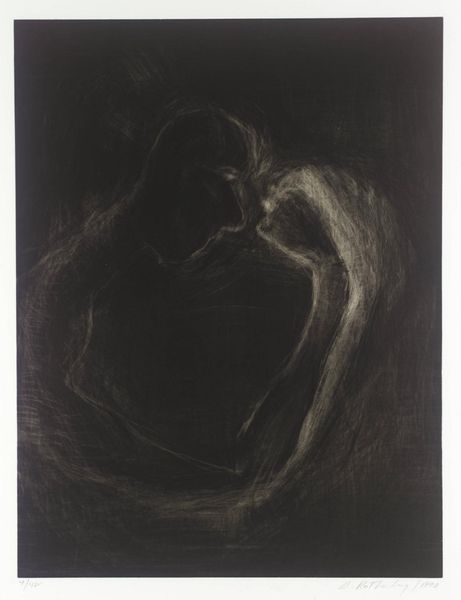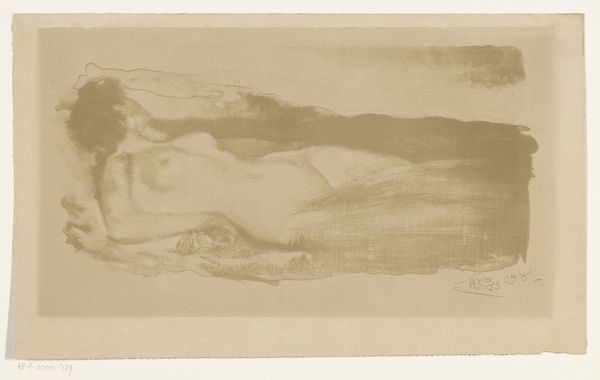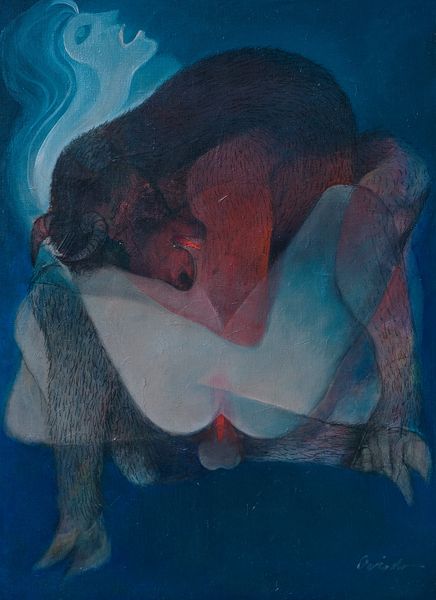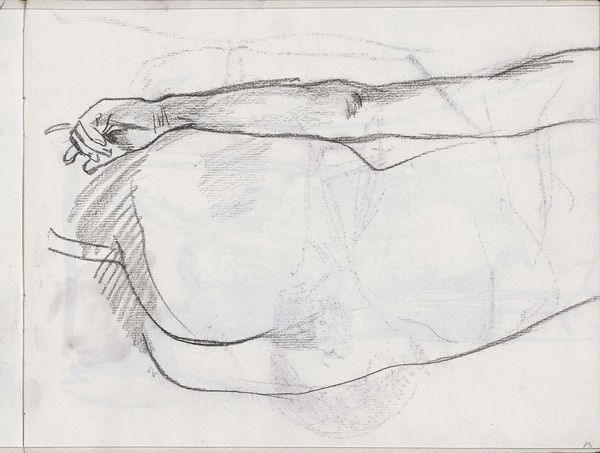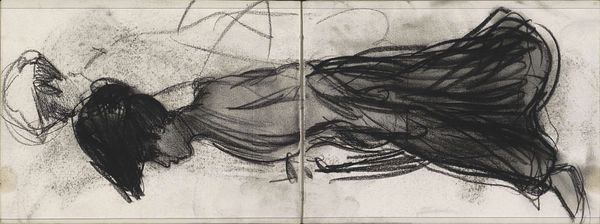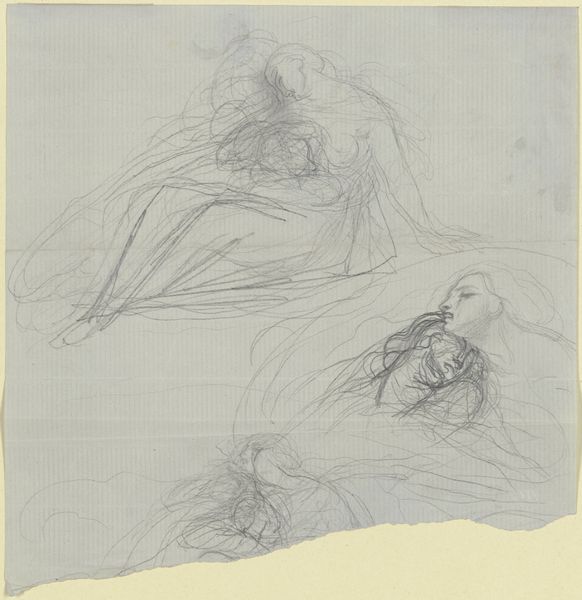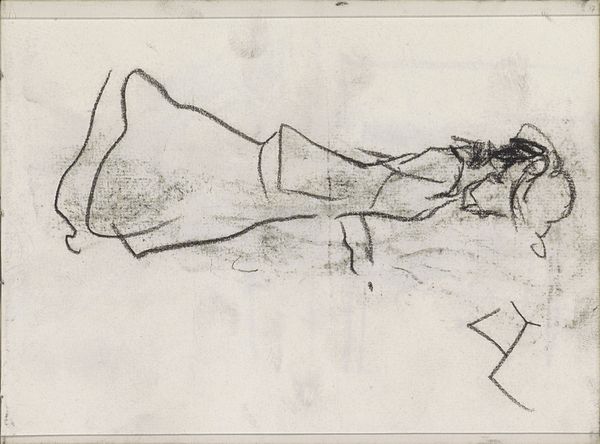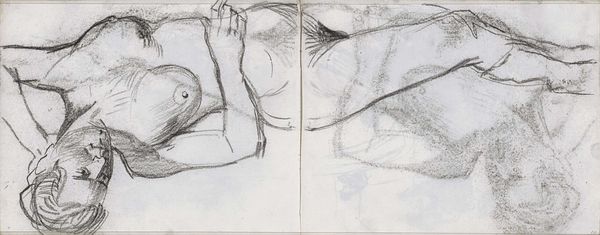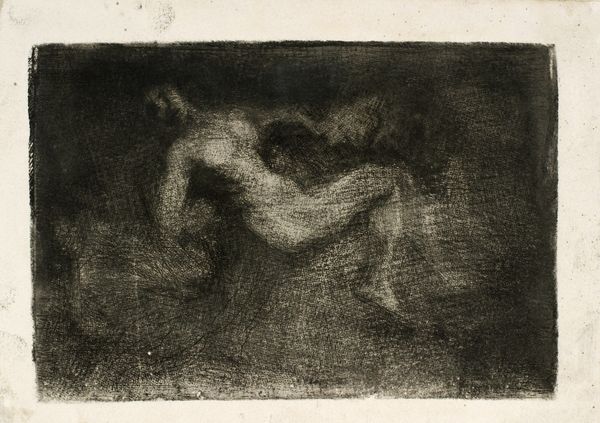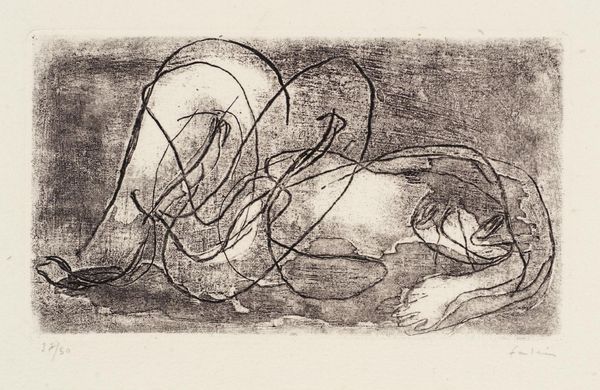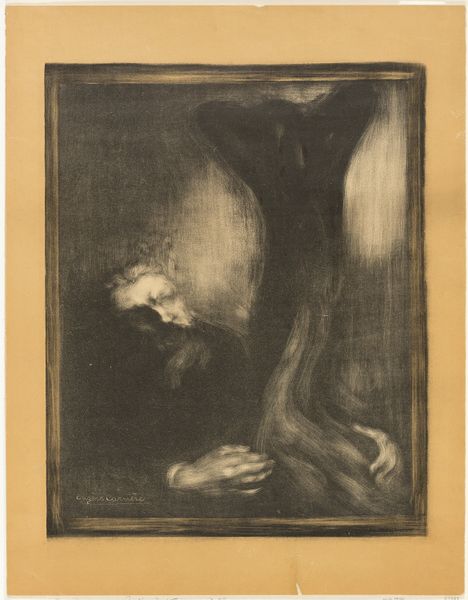
drawing, graphite
#
portrait
#
drawing
#
graphite
#
nude
Dimensions: height 558 mm, width 388 mm
Copyright: Rijks Museum: Open Domain
Editor: This is "Andromeda (schets)," a graphite drawing by John Macallan Swan, created sometime between 1857 and 1910. I'm immediately struck by the vulnerability in the figure’s posture and the contrast of the figure against the dark background. What do you see in this piece, especially regarding its potential role in its time? Curator: Well, beyond its immediate aesthetic appeal, it’s crucial to consider how the artistic depiction of the nude body, particularly the female nude, played a significant role in reinforcing or challenging social norms. The Andromeda myth itself often reflects societal anxieties about female sexuality and vulnerability. The sketches almost ethereal quality and focus on Andromeda arguably invites viewers to consider these broader cultural contexts. Editor: I hadn't thought about the societal expectations loaded into that classical story. Do you think this specific rendering does anything to either play into or subvert that? Curator: Precisely. Notice how Swan presents Andromeda – is she actively struggling, or is there a sense of passive resignation? This artistic choice might reflect Victorian attitudes towards female agency and victimhood, but it also allows for potential interpretations where Andromeda embodies resilience despite her predicament. This makes us consider who was this made for, and why would Swan produce a ‘sketch’ which seems in progress rather than finished? Was it commissioned for a sculpture or another artwork, or does it reveal something of artistic practice at that time? Editor: That tension between resignation and resilience is really interesting. Considering that period's constraints, it could have served different functions. It makes me wonder who would have viewed a piece like this? Curator: Exactly, and how its display, either in private studios or perhaps in more public exhibitions, would further shape its reception and meaning. Ultimately, it underscores the importance of interrogating the politics of imagery and the public role of art. Editor: Thank you. Considering those potential contrasting views certainly changed my initial perception. It highlights that understanding art involves considering its historical role in broader social and cultural dynamics.
Comments
No comments
Be the first to comment and join the conversation on the ultimate creative platform.
